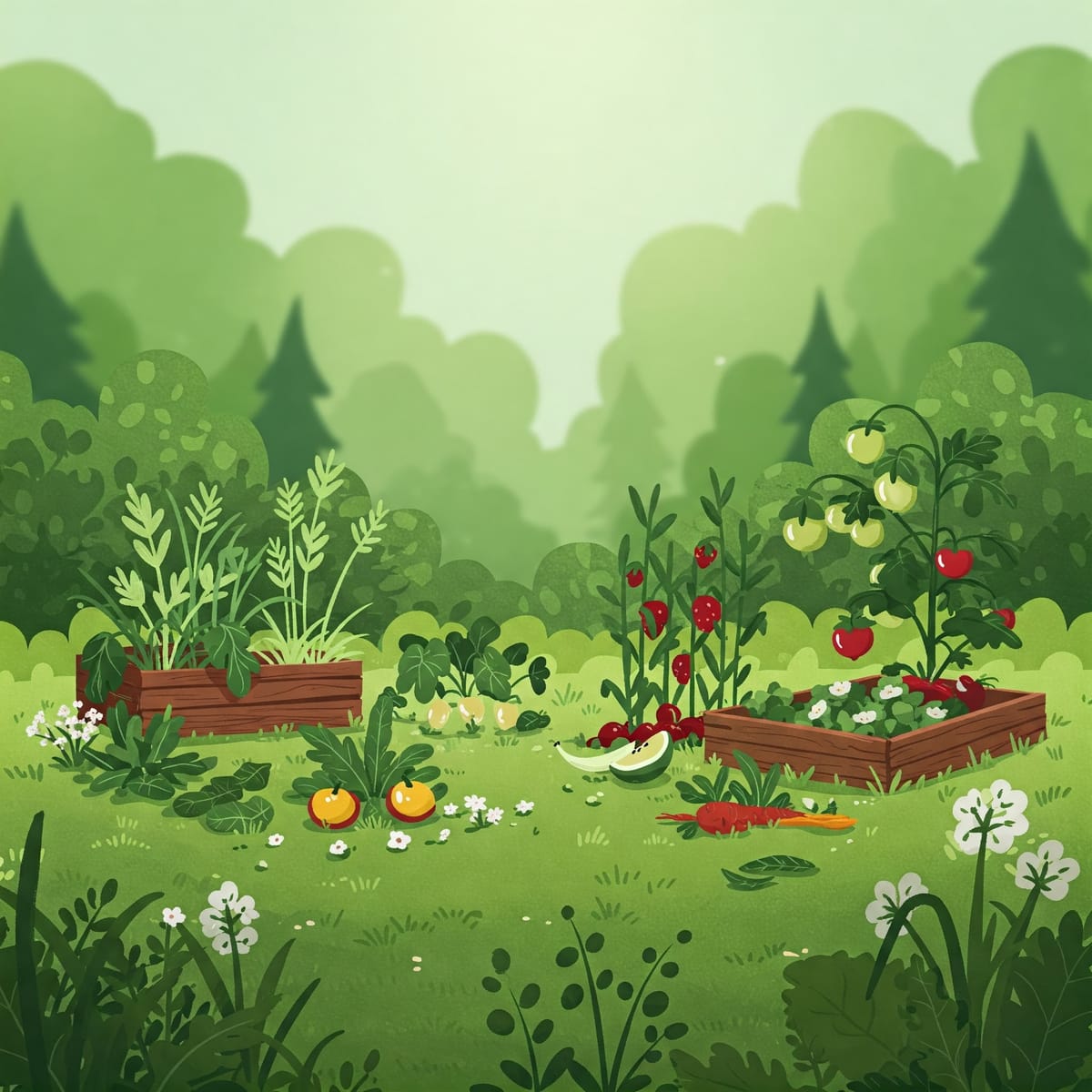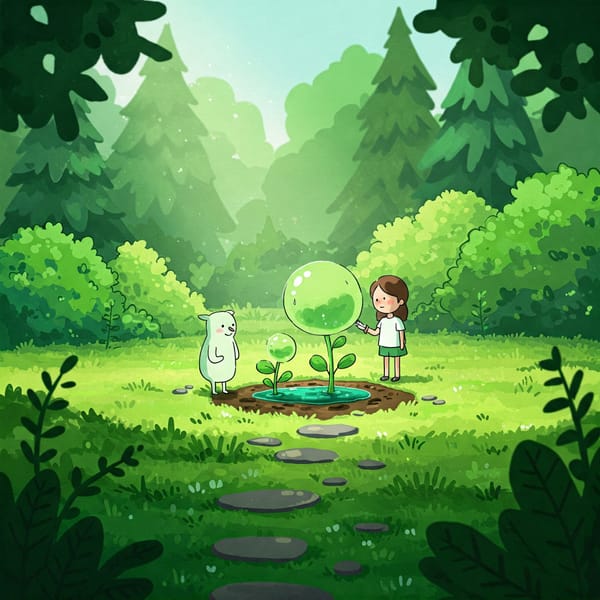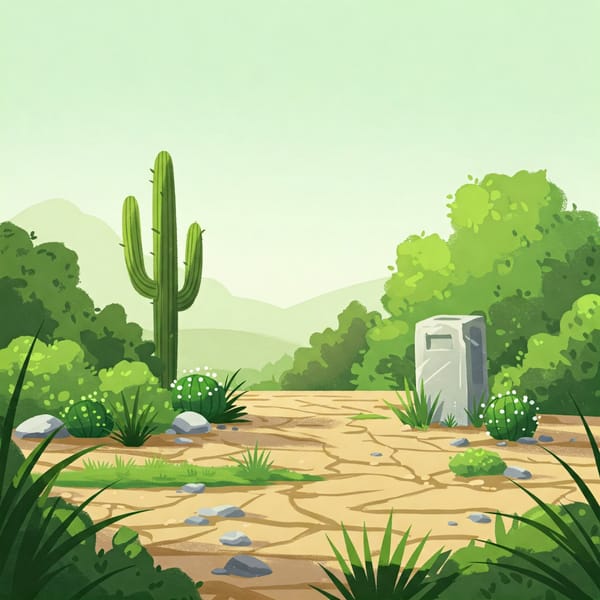From Green Carpet to Green Grocer: Transforming Your Sydney Lawn into an Edible Oasis

TLDR
Traditional lawns consume vast amounts of water, rely on harmful pesticides, and contribute to carbon emissions. Converting lawn space into an edible garden offers a sustainable alternative, enhancing food security by providing fresh produce, reducing food miles, minimizing waste, and creating habitats for beneficial wildlife. Methods like sheet mulching, lasagna gardening, and soil solarization offer practical ways to transform lawns into fertile growing areas. Sydney's climate is ideal for growing a wide variety of vegetables, fruits, and herbs year-round, and employing organic pest control, disease management, and soil health practices ensures a thriving, healthy garden. While there are initial costs and ongoing maintenance, the environmental, health, and personal benefits of converting a lawn to an edible garden are substantial.
From Green Carpet to Green Grocer: Transforming Your Sydney Lawn into an Edible Oasis
The classic suburban dream often features a neat, green lawn – a symbol of order and tidiness. However, this familiar landscape hides significant environmental costs, demanding vast resources and contributing to ecological harm. For homeowners in Sydney, NSW, there lies a tremendous opportunity to reimagine these spaces, transforming them from resource-intensive monocultures into productive, life-sustaining edible gardens. This shift not only addresses pressing environmental issues but also reconnects us with our food sources and the natural world.
The Hidden Costs of a Traditional Lawn
Maintaining that perfect green carpet comes at a price far exceeding the cost of water and fertilizer.
Water Consumption: Lawns are incredibly thirsty. In the US, they account for roughly a third of all residential water use, equating to billions of gallons daily. In drier regions, this can climb to 60%. This strain on water resources is a global concern, highly relevant to Sydney, which experiences drought periods. Watering an average lawn for just 20 minutes daily for a week can consume the equivalent of nearly 800 showers. Non-native grasses typically used in lawns require far more water than native, climate-adapted plants.
Chemical Dependency: Lawn care often involves heavy use of pesticides and herbicides. Homeowners may apply up to ten times more chemical pesticides per acre than farmers. This poses risks to human health, linked to serious conditions like cancers and neurological disorders. The environmental toll is also steep. Pesticides harm wildlife, including millions of birds annually, and contaminate waterways through runoff, polluting water, harming aquatic life even in minute quantities, and potentially triggering toxic algae blooms. These chemicals can also leach into groundwater supplies.
Carbon Footprint: Lawn maintenance contributes significantly to greenhouse gas emissions. Gas-powered mowers are major air polluters, with one hour of operation potentially equaling eleven hours of driving a new car. The mowing, chemical use, and irrigation required for vast expanses of lawn (equivalent to the area of New England in the US) release millions of tons of greenhouse gases yearly. While grass does sequester some carbon, native landscapes and trees are far more effective. Some studies even suggest urban lawns can be net carbon emitters due to their high upkeep demands.
The Bountiful Benefits of Edible Gardening
Transitioning from lawn to edible garden offers a powerful solution to these environmental woes, yielding numerous advantages.
Enhanced Food Security & Nutrition: Growing your own food provides direct control over your food source, ensuring freshness and knowledge of growing practices. Edible gardens increase access to healthy fruits and vegetables, promoting better nutrition, especially in urban areas with limited fresh produce access. Historically, home gardens have been crucial for food security and diversifying crops. Local food production strengthens community resilience against climate change and supply chain disruptions.
Sustainability and Reduced Environmental Impact: Homegrown food drastically cuts down the carbon footprint associated with transportation (food travels an average of 745km in Australia), large-scale farming, and packaging. It allows for organic practices, minimizing harmful pesticide and fertilizer use, protecting ecosystems, and reducing pollution. Edible gardening inherently reduces packaging waste. Furthermore, sustainable edible landscapes conserve water through smart planting and efficient irrigation.
Ecological Advantages: Edible gardens become vital habitats, attracting essential pollinators like bees and butterflies, crucial for food crop reproduction and ecosystem health. Diverse plantings support beneficial insects that naturally control pests, lessening the need for chemicals. This increased biodiversity creates a more resilient local ecosystem. Incorporating native Australian edible plants further boosts these benefits.
Practical Methods for Lawn Conversion
Ready to make the switch? Several effective techniques can turn your lawn into a thriving edible garden without necessarily breaking your back.
Sheet Mulching (No-Dig Method): This popular technique smothers grass and weeds while building healthy soil simultaneously.
- Mow grass very short. Optional: Aerate the soil.
- Lay overlapping layers of thick brown cardboard (tape removed) or newspaper (avoiding glossy/colored ink, stack 2-3 feet tall) directly over the grass.
- Wet the cardboard/newspaper layer thoroughly.
- Add a layer of nitrogen-rich 'green' materials (grass clippings, veggie scraps).
- Add a layer of carbon-rich 'brown' materials (leaves, straw, wood chips).
- Alternate green and brown layers to a depth of 8-12 inches, ending with a brown layer.
- Top with 4-6 inches of a compost/topsoil blend.
- Water well.
- Wait 1-3 months (ideally starting in autumn for spring planting) for decomposition before planting. Sheet mulching effectively blocks weeds, builds soil, recycles waste, requires less watering, and is budget-friendly.
Lasagna Gardening (Layering for Success): Similar to sheet mulching, this no-dig method focuses on building rich soil through layering.
- Choose your spot (no need to remove sod).
- Lay cardboard or newspaper over the grass.
- Alternate layers of 'green' (nitrogen: veggie scraps, grass clippings, coffee grounds) and 'brown' (carbon: leaves, straw, shredded paper, compost - use twice as much brown as green). Aim for an initial height of about two feet, watering each layer.
- For immediate planting, top with 4 inches of topsoil or peat. This method results in less weeding, better water retention, reduced fertilizer needs, and fluffy, nutrient-rich soil. Starting in fall is ideal due to abundant materials.
Soil Solarization (Harnessing the Sun): This chemical-free method uses solar heat to kill weeds, pests, and diseases. It's best done during Sydney's hottest months.
- Mow grass very short.
- Smooth the soil bed, removing debris.
- Water the soil deeply (top 12 inches). Moist soil conducts heat better.
- Cover tightly with clear plastic (2-6 mil thick), burying or weighing down the edges.
- Leave for 4-8 weeks during the sunniest, hottest period (summer).
- Remove plastic; the soil is ready for planting. Solarization controls many weeds, pests, and pathogens and can improve soil by accelerating organic matter breakdown. However, it can also harm beneficial soil organisms.
Planting Your Sydney Edible Garden
Sydney's temperate climate is superb for year-round edible gardening. Choosing plants suited to the season, sunlight, and soil is crucial.
Beginner-Friendly Vegetables: Easy wins include leafy greens (lettuce, kale, silverbeet, rocket, spinach), root vegetables (radishes, turnips, carrots), cucumbers, broccoli, peas, and strawberries. Most prefer rich, well-drained soil with a slightly acidic pH and full sun, though some tolerate partial shade.
Seasonal Planting:
- Winter: Grow broccoli, cauliflower, spinach, carrots, peas, parsley, leeks, onions, broad beans, Chinese greens, turnips, beetroot, cabbage, and silverbeet.
- Summer: Options abound! Plant tomatoes, capsicum, zucchini, beans, radish, rhubarb, shallots, sweet corn, sweet potato, cucumber, eggplant, chilli, lettuce, and potatoes.
Fruits & Berries: Sydney supports tropical fruits like mangoes, guavas, passionfruit, paw paw, dragon fruit, and macadamia in sunny, sheltered spots. Citrus (lemons, oranges), avocados, figs, mulberries, and olives also do well. Consider native edibles like lemon myrtle, lilly pilly, and Illawarra plum for unique flavours and ecological benefits. Blueberries and strawberries are reliable berry producers.
Herbs: Grow thyme, winter tarragon, parsley, oregano, marjoram, garlic, and coriander in warm, sunny spots. Mint and chives tolerate shadier areas. Native herbs like native spinach and mint can handle partial shade, while lemon myrtle and saltbush love sun.
Organic Pest and Disease Management
Sustainable gardening prioritizes natural methods for healthy plants.
Organic Pest Control:
- Companion Planting: Grow specific plants together to deter pests (e.g., marigolds, rosemary, alliums) or attract beneficial insects (e.g., dill, cosmos, parsley). Some plants act as 'trap crops' (e.g., nasturtiums for aphids).
- Attracting Beneficial Insects: Encourage natural predators (ladybugs, lacewings, spiders, wasps) by planting flowers and herbs.
- Natural Pesticides: Use options like Neem oil, Spinosad, Bt (Bacillus thuringiensis), insecticidal soap, horticultural oils, or diatomaceous earth when necessary. Use Pyrethrin cautiously as it can harm beneficials.
Natural Disease Prevention & Management:
- Prevention: Choose disease-resistant varieties and disease-free seeds/plants. Ensure good drainage, sunlight, and air circulation (proper spacing). Water at the base of plants. Mulch to prevent soil splash. Practice crop rotation (changing planting locations for plant families yearly). Maintain soil fertility and practice good sanitation (removing diseased material).
- Management: Remove infected plant parts promptly. Improve drainage if needed. Use natural fungicides like milk spray (for powdery mildew), copper-based sprays, or biofungicides if required.
Budgeting and Resources
Converting your lawn involves initial costs for tools, materials, and plants.
- Tools: Basic hand tools (trowel, fork, pruners, shovel, rake), watering gear, and perhaps a wheelbarrow are essential. Basic sets can cost $25-$47. A soil test kit is useful.
- Materials: For sheet mulching/lasagna gardening, you'll need cardboard/newspaper (often free), mulch ($51-$95/cubic meter in Sydney), compost, and topsoil ($75-$85/cubic meter for garden/veggie mixes). Solarization requires clear plastic sheeting.
- Garden Beds: Optional raised beds vary in price ($28 to hundreds).
- Irrigation: Soaker hoses or drip systems are an added cost.
- Plants: Seeds ($1-$5/packet) are cheapest. Seedlings ($1-$6/plant) offer a head start. Fruit trees ($39 to over $1000) are a larger investment. Herbs are usually $2-$12.
Maintaining Your Edible Oasis
Ongoing care ensures a productive garden.
Watering: Water deeply and less often to encourage strong roots. Check soil moisture 2 inches down before watering. Aim for about one inch per week for vegetables. Use efficient methods like drip irrigation or soaker hoses, watering early in the morning. Avoid overwatering.
Weed Management: Mulch (2-3 inches deep) is key to suppressing weeds. Hand-pulling and hoeing are effective. Some "weeds" like purslane and dandelion are edible.
Soil Health: Healthy soil is paramount. Regularly amend soil with compost. Practice crop rotation, grouping plant families and rotating their location every 3-4 years. Consider planting cover crops in the off-season to enrich soil and suppress weeds. Avoid compacting soil by using paths.
A Greener, Tastier Future
Converting your lawn to an edible garden is more than just a landscaping project; it's a meaningful step towards a more sustainable lifestyle. It reduces water usage, eliminates harmful chemicals, lowers your carbon footprint, enhances biodiversity, and provides the unparalleled reward of fresh, homegrown food. While it requires initial effort, the long-term benefits for your health, your environment, and your connection to nature are immense. Sydney homeowners have a fantastic opportunity to cultivate a delicious and sustainable future, right in their own yards.




